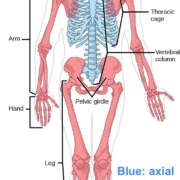5 Simple Strategies to Enhance Your MSK Health at Home
In our fast-paced world, taking care of our musculoskeletal (MSK) health can often take a backseat. Yet, maintaining the strength and flexibility of our muscles and joints is crucial for overall well-being and mobility. Whether you’re working from home, juggling family responsibilities, or simply enjoying a quieter lifestyle, there are simple yet effective strategies you can incorporate into your daily routine to enhance your MSK health right from the comfort of your home. In this listicle, we’ll explore five straightforward strategies that can help you strengthen your body, improve flexibility, and reduce discomfort. By the end, you’ll have practical tips to implement today, empowering you to take charge of your MSK health and promote a more active, pain-free life. Let’s dive in!
1) Prioritize Movement Breaks: Set a timer to remind yourself to take short movement breaks every hour. Whether it’s a quick stretch, a brisk walk around the house, or some light yoga, these breaks can help alleviate stiffness and improve circulation, keeping your musculoskeletal system in check
Incorporating movement breaks into your daily routine is essential for maintaining a healthy musculoskeletal system. Setting a timer to remind yourself to take short breaks every hour can be a game-changer. During these breaks, consider engaging in activities that promote flexibility and circulation. Here are a few ideas to get you started:
- Quick Stretch: Stand up and reach for the sky, then bend down to touch your toes. This can help relieve tension in your back and legs.
- Brisk Walk: Take a five-minute walk around your home. This not only gets your blood flowing but also gives your mind a break.
- Light Yoga: Try a few simple yoga poses like the cat-cow stretch or downward dog to enhance flexibility and reduce stiffness.
To help you keep track of your movement breaks, consider creating a simple schedule that outlines when and what type of movement you’ll do. Here’s a quick reference table to illustrate a potential movement break plan:
| Time | Activity | Duration |
|---|---|---|
| 10:00 AM | Stretch | 5 minutes |
| 11:00 AM | Walk | 5 minutes |
| 12:00 PM | Yoga | 5 minutes |
| 1:00 PM | Stretch | 5 minutes |
| 2:00 PM | Walk | 5 minutes |
By consistently integrating these movement breaks into your day, you can significantly enhance your overall well-being and keep your musculoskeletal system functioning optimally. Remember, every little bit of movement counts!
2) Invest in Ergonomic Furniture: Evaluate your workspace and consider upgrading to ergonomic furniture. A supportive chair and desk can make a significant difference in your posture and comfort, reducing strain on your back, neck, and joints during long hours of sitting
Upgrading your workspace with ergonomic furniture can be a game-changer for your musculoskeletal health. Investing in a supportive chair that promotes proper posture can alleviate pressure on your spine, while a height-adjustable desk allows you to alternate between sitting and standing, reducing the risks associated with prolonged sitting. Consider features such as lumbar support, adjustable armrests, and seat depth to ensure that your chair fits your body perfectly. By creating a workspace that caters to your unique physical needs, you can transform your productivity while minimizing discomfort.
To help you make informed decisions, here’s a quick comparison of key ergonomic features to look for:
| Feature | Benefits |
|---|---|
| Lumbar Support | Reduces lower back strain and promotes spinal alignment. |
| Adjustable Height | Allows for customization based on your height and desk setup. |
| Armrests | Supports arms and shoulders, reducing neck tension. |
| Seat Depth Adjustment | Ensures proper leg support and circulation. |
By thoughtfully considering these ergonomic features, you can create a workspace that not only enhances your comfort but also supports your overall well-being. Remember, the right furniture is an investment in your health that pays dividends in productivity and comfort.
3) Incorporate Strength Training: Add simple strength training exercises to your routine using body weight or resistance bands. Focus on major muscle groups to build strength and stability, which can enhance joint support and reduce the risk of injuries over time
Strength training is a vital component of any fitness routine, especially when focusing on musculoskeletal health. By incorporating simple exercises that utilize your body weight or resistance bands, you can effectively target the major muscle groups, such as the legs, back, chest, and arms. This not only builds strength but also enhances stability, which is crucial for maintaining proper joint function. Here are some effective exercises to consider:
- Bodyweight Squats: Great for strengthening the legs and improving balance.
- Push-ups: A classic move that targets the chest, shoulders, and triceps.
- Resistance Band Rows: Excellent for developing upper back strength and improving posture.
- Glute Bridges: Focuses on the glutes and lower back, promoting pelvic stability.
- Plank Variations: Engages core muscles, enhancing overall stability and strength.
To make tracking your progress easier, consider using a simple table to log your workouts and monitor improvements over time. This can help keep you motivated and accountable:
| Exercise | Sets | Reps | Notes |
|---|---|---|---|
| Bodyweight Squats | 3 | 10-15 | Focus on form |
| Push-ups | 3 | 8-12 | Modify as needed |
| Resistance Band Rows | 3 | 10-15 | Keep elbows close |
| Glute Bridges | 3 | 10-15 | Squeeze at the top |
| Plank Variations | 3 | 30 seconds | Engage core |
4) Stay Hydrated: Don’t underestimate the power of hydration! Drinking plenty of water throughout the day helps maintain joint lubrication and overall tissue health. Consider setting a daily water intake goal to keep your body functioning optimally
Hydration is often overlooked, but its importance cannot be overstated, especially when it comes to maintaining musculoskeletal health. Water plays a crucial role in keeping our joints lubricated, which can help prevent stiffness and discomfort. When you’re properly hydrated, your body functions more efficiently, allowing for better nutrient transport to your muscles and tissues. To ensure you’re drinking enough, consider using a water tracking app or a simple water bottle with measurement markings. This way, you can visually see your progress throughout the day.
Here are some tips to help you stay on track with your hydration goals:
- Carry a reusable water bottle: Keep it with you at all times to remind yourself to sip regularly.
- Set reminders: Use your phone or a timer to alert you to drink water at regular intervals.
- Infuse your water: Add slices of fruits or herbs like lemon, cucumber, or mint to enhance the flavor and make drinking water more enjoyable.
- Track your intake: Use a journal or an app to monitor how much water you consume daily.
| Time of Day | Recommended Intake |
|---|---|
| Morning (upon waking) | 1 glass (8 oz) |
| Midday | 2 glasses (16 oz) |
| Afternoon | 2 glasses (16 oz) |
| Evening | 1 glass (8 oz) |
5) Practice Mindful Relaxation: Engage in relaxation techniques such as deep breathing, meditation, or gentle stretching. These practices not only reduce stress but also promote better muscle relaxation and recovery, contributing to improved overall musculoskeletal health
Incorporating relaxation techniques into your daily routine can be a transformative experience for your musculoskeletal health. Deep breathing exercises help to calm the mind and body, allowing for a greater flow of oxygen to your muscles, which aids in recovery. Consider setting aside just a few minutes each day to focus on your breath; inhale deeply through your nose, hold for a moment, and exhale slowly through your mouth. This simple practice can significantly reduce tension and promote a sense of well-being.
Meditation and gentle stretching are also excellent methods to enhance relaxation. Meditation encourages mental clarity and emotional stability, which can alleviate stress that often manifests as physical tension in the body. Meanwhile, gentle stretching helps to improve flexibility and release tight muscles. You might find it beneficial to create a routine that combines these practices. A sample schedule could look like this:
| Time | Activity |
|---|---|
| Morning | 10 minutes of deep breathing |
| Afternoon | 5 minutes of gentle stretching |
| Evening | 15 minutes of meditation |
By consistently practicing these techniques, you will not only experience reduced stress levels but also promote better muscle relaxation and recovery. Over time, this commitment to mindful relaxation can lead to improved overall musculoskeletal health, allowing you to move through your daily activities with greater ease and comfort.
In Retrospect
As we wrap up our exploration of these five simple strategies to enhance your musculoskeletal health at home, remember that small changes can lead to significant improvements. Whether it’s incorporating regular stretches into your routine, investing in supportive footwear, or simply being mindful of your posture, each step you take contributes to a stronger, more resilient body.
Prioritizing your MSK health is not just about immediate relief; it’s about fostering a lifestyle that supports long-term well-being. So, take a moment to reflect on which strategies resonate most with you, and don’t hesitate to experiment until you find what works best for your unique needs.
Your journey to better musculoskeletal health starts today—embrace it with enthusiasm and commitment. Here’s to a healthier, more active you, right from the comfort of your home!










Leave a Reply
Want to join the discussion?Feel free to contribute!